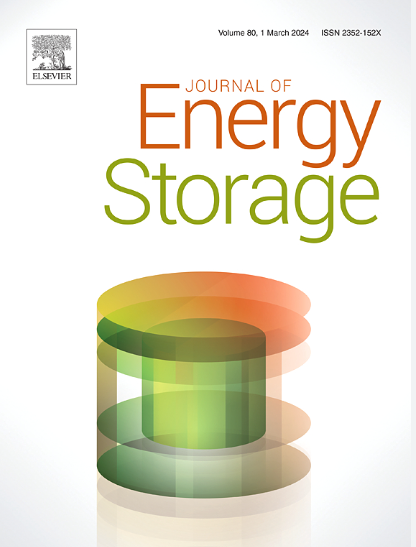Emerging advances of 2D molybdenum disulfide (MoS2) and their composites towards high-performance supercapacitors: A comprehensive review
IF 8.9
2区 工程技术
Q1 ENERGY & FUELS
引用次数: 0
Abstract
Due to the widespread usage of energy consumption, there is an increasing need for energy at a global scale. Supercapacitors have been a better choice lately because of their high-power density, rapid charging and discharging, and prolonged cycle life. Several electrode materials have been studied thus far to enhance the performance of the supercapacitor. In recent times, transition metal dichalcogenides (TMDCs) have gained popularity as active electrode material for supercapacitors owing to their interesting structure, better stability, larger surface area, more active sites, and high electrical conductivity. Among various TMDCs, MoS2 has gained interest as an electrode material due to its amazing characteristics such as being rich in active sites, honeycomb structure, increased ionic and electronic conductivity, and increased surface area. The current article mainly focuses on various synthesis methods for Molybdenum disulfide (MoS2). Furthermore, pure MoS2 and its composite with carbon-based material, conducting polymer-based materials, metal oxides, carbides, and nitrides have been utilized to improve the performance of supercapacitors discussed. In the last section, future perspectives and challenges are discussed.

二维二硫化钼(MoS2)及其复合材料在高性能超级电容器方面的新进展:综述
由于能源消耗的广泛使用,全球范围内对能源的需求与日俱增。超级电容器因其功率密度高、充放电速度快、循环寿命长等优点,成为近来的较佳选择。为了提高超级电容器的性能,迄今已研究了多种电极材料。近来,过渡金属二钙化物(TMDCs)因其有趣的结构、更好的稳定性、更大的表面积、更多的活性位点和高导电性,作为超级电容器的活性电极材料越来越受欢迎。在各种 TMDC 中,MoS2 因其丰富的活性位点、蜂窝状结构、更高的离子和电子电导率以及更大的比表面积等惊人特性而作为电极材料备受关注。本文主要介绍二硫化钼(MoS2)的各种合成方法。此外,还讨论了利用纯 MoS2 及其与碳基材料、导电聚合物基材料、金属氧化物、碳化物和氮化物的复合材料来提高超级电容器的性能。最后一节讨论了未来的前景和挑战。
本文章由计算机程序翻译,如有差异,请以英文原文为准。
求助全文
约1分钟内获得全文
求助全文
来源期刊

Journal of energy storage
Energy-Renewable Energy, Sustainability and the Environment
CiteScore
11.80
自引率
24.50%
发文量
2262
审稿时长
69 days
期刊介绍:
Journal of energy storage focusses on all aspects of energy storage, in particular systems integration, electric grid integration, modelling and analysis, novel energy storage technologies, sizing and management strategies, business models for operation of storage systems and energy storage developments worldwide.
 求助内容:
求助内容: 应助结果提醒方式:
应助结果提醒方式:


